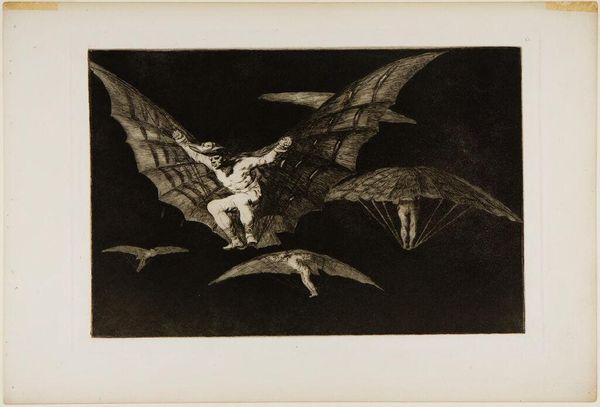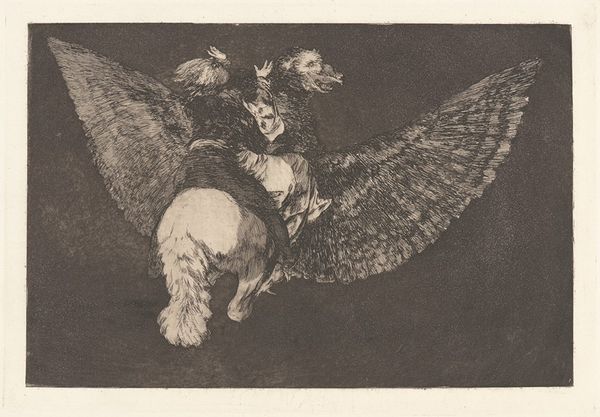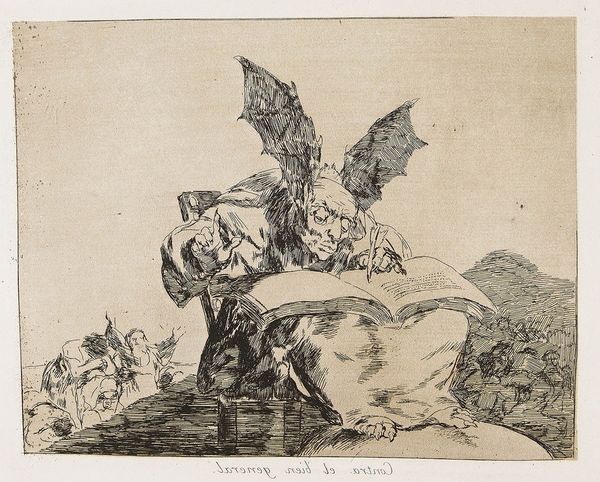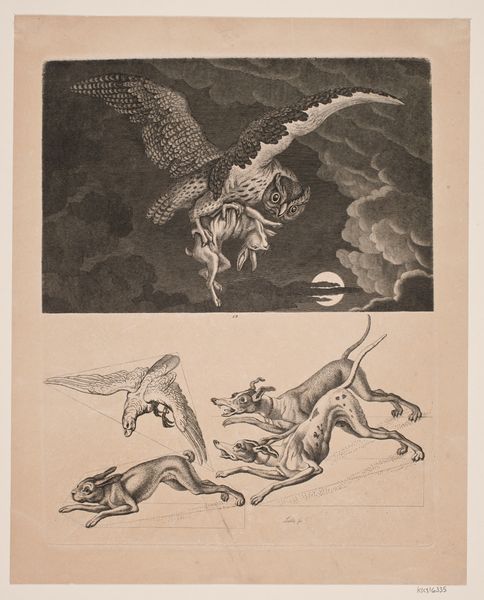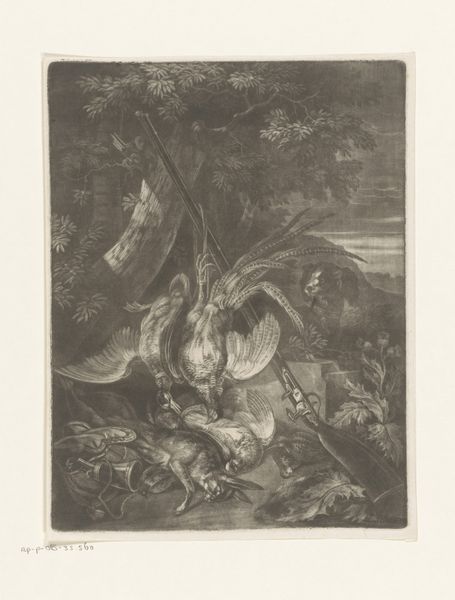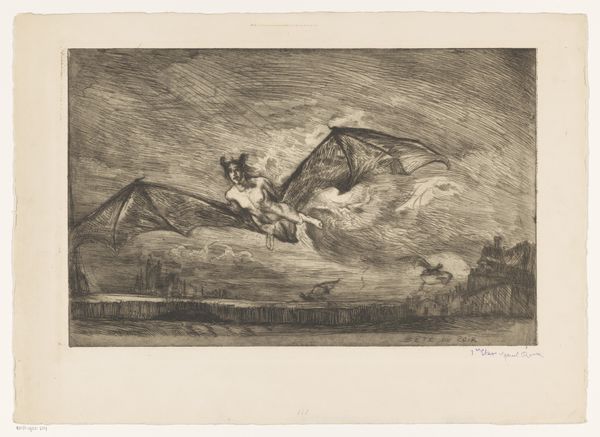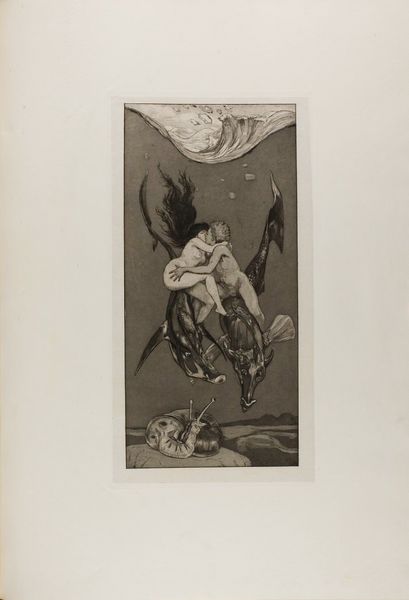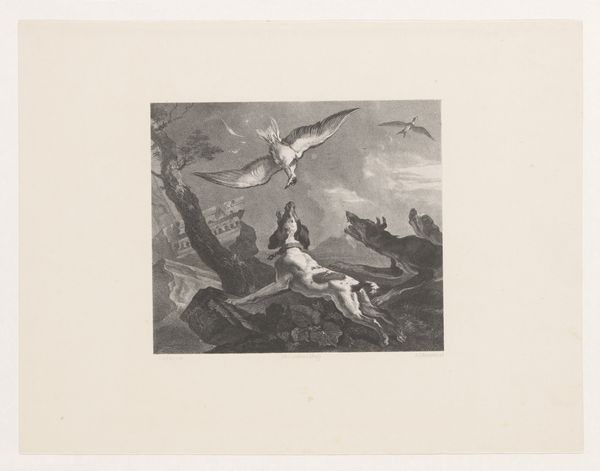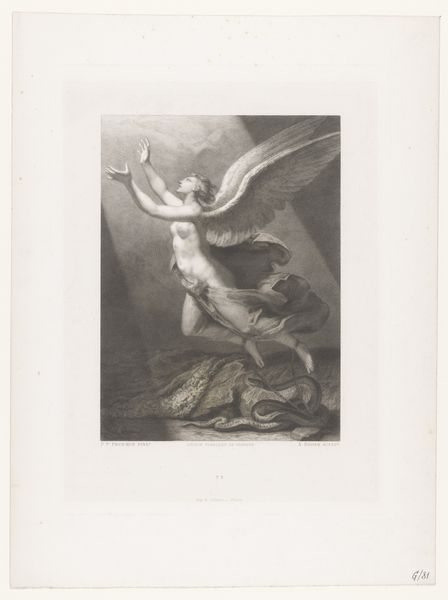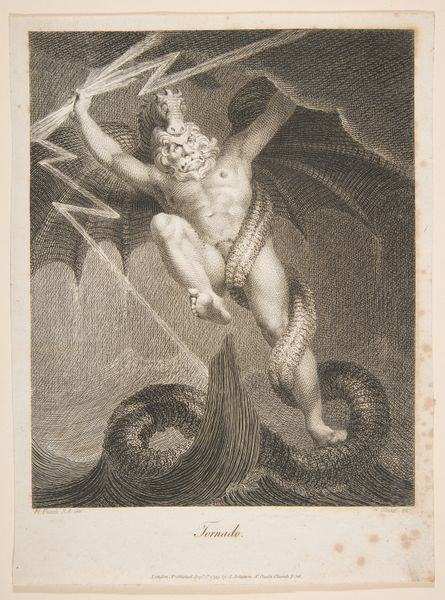
print, etching
# print
#
etching
#
etching
#
figuration
#
romanticism
#
history-painting
Copyright: Public Domain: Artvee
Editor: This is "3 Bll. aus ‘Los Proverbios’", or "Three Prints from 'The Proverbs'," created by Francisco de Goya between 1815 and 1823, using etching. The figures with bat-like wings immediately struck me – what’s your perspective on this fantastical scene? Curator: I see a potent critique of power and its mechanisms of control embedded in the etching process itself. Consider how Goya manipulates the copper plate. Each etched line, each area of aquatint, represents a deliberate act of labour, almost a form of cultural excavation revealing social anxieties. Editor: Could you elaborate on that idea of “cultural excavation”? Curator: Goya's choice of etching as a medium allowed for wider distribution. In effect he democratised the critique by its mechanical reproduction. Think about the acid, biting into the metal; its violence parallels the societal violence he’s portraying, wouldn't you say? The materiality mirrors the message. Editor: That's a very interesting way of thinking about it. So, you're suggesting the printmaking process itself is a commentary on labor and society? Curator: Precisely. The multiple stages required to create the etching -- the grounding, the drawing, the biting with acid, the inking and the pressing -- are all labour intensive. In viewing, how much does one consider those choices as inherent content, not merely technique? What meanings can the commodification of printed imagery generate? Editor: I never really thought about it that way. Focusing on Goya's methods gives me an entirely new way of interpreting it. Thank you! Curator: Indeed. Paying attention to materiality enriches any interpretive experience. It allows us a glimpse of labor otherwise unseen in high art, helping connect us more closely to broader issues of production, consumption, and ideology in society.
Comments
No comments
Be the first to comment and join the conversation on the ultimate creative platform.

